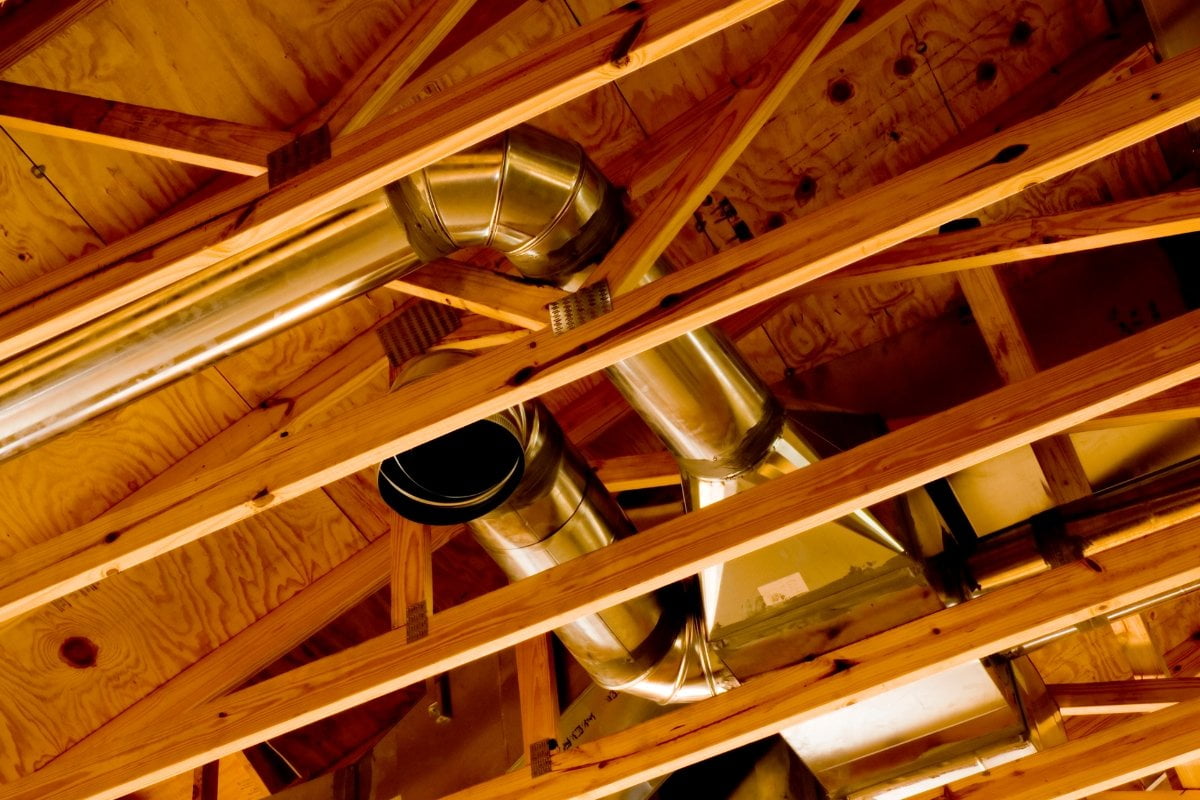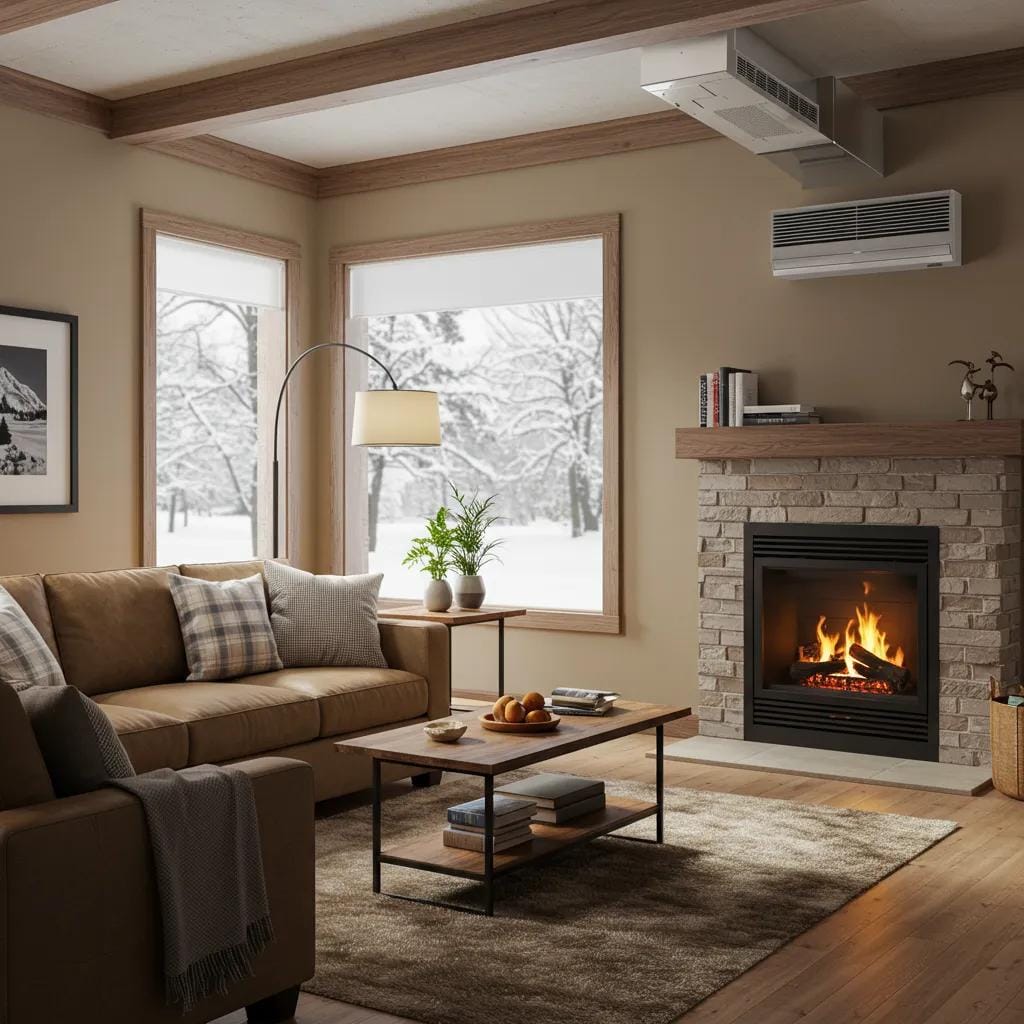Energy efficiency has become increasingly important in modern households. As energy consumption becomes a growing concern within households, it’s important to understand the impact that certain features of our homes have on our energy bills.
Among such features is ductwork, which helps move air throughout our homes, allowing us to stay comfortable while conserving energy. But though all types of ductwork allow us to control our home’s temperature, each type can have different effects on our energy bills — effects that are often overlooked when evaluating our home’s energy efficiency.
In this blog post, we’ll look at how different types of ductwork affect our energy bills and how we can calculate the costs so that we can make more informed decisions about our home’s energy usage. With up-to-date information and cost comparisons, you’ll be able to make an informed decision about the type of ductwork that’s best for your home and budget.
What is Ductwork and How Does it Affect Energy Bills?
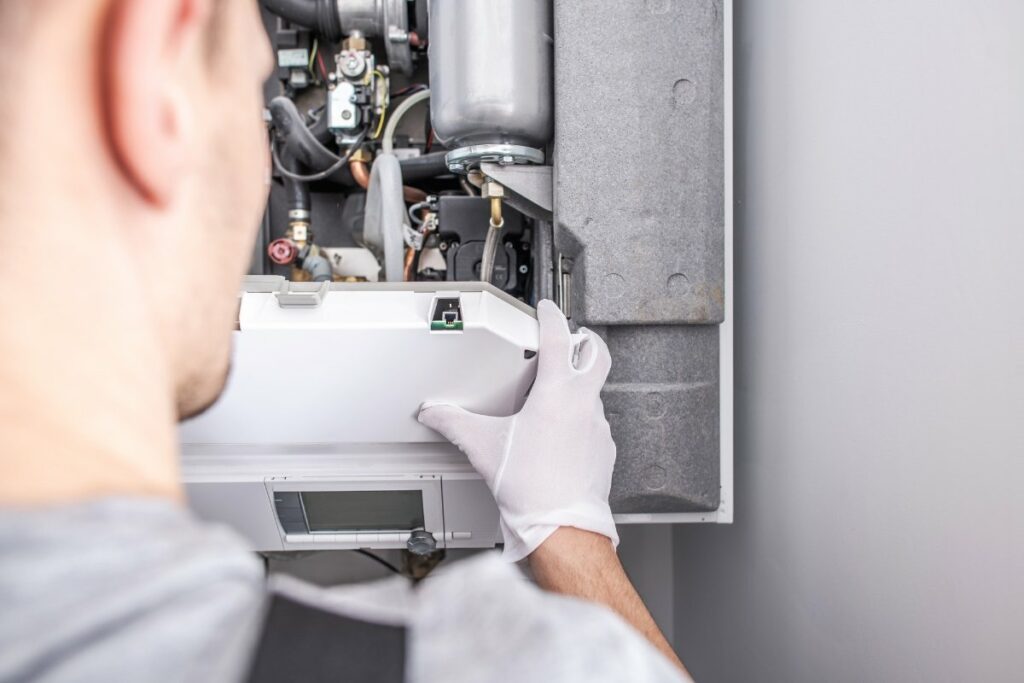
Ductwork is a vital component of every HVAC system. It is the network of tubes that carries heated or cooled air from the furnace or air conditioner throughout a building. Without ductwork, air from the HVAC system would be unable to travel around a building.
Different types of ductwork can have a profound impact on how much energy is consumed by the HVAC system. When considering how the different types of ductwork affect energy bills, it is important to evaluate the size, location, and material of the ducts.
The size of the ductwork affects the amount of air flow and, in turn, the amount of energy expended. If the ducts are too large, the air will take longer to reach the desired temperature. Too small and the air will move too quickly, also causing a spike in energy bills. Ensuring that the ductwork is the correct size for the HVAC system is key to avoiding energy waste.
The location of the ductwork can also have an impact on energy bills. If the ducts are placed in a place that is not well insulated, more energy will be needed to reach the desired temperature. Additionally, if the ducts are in an area with a lot of direct sunlight, the temperature of the air that passes through them will increase, resulting in a decrease in efficiency.
The material of the ductwork also plays a role in energy bills. The most energy-efficient type of ductwork is flexible ducting. Flexible ducts are made from a material that is airtight and easy to install, resulting in less air leaking out of the system. Additionally, flexible ducts are lightweight, making them easier to install and move around if necessary.
Choosing the right type of ductwork for a particular HVAC system is essential for reducing energy bills. Taking into account the size, location, and material of the ducts will ensure that the system is as efficient as possible. Knowing that different types of ductwork can affect energy bills is the first step towards making the right choice for an HVAC system.
Types of Ductwork and Their Effects on Energy Efficiency
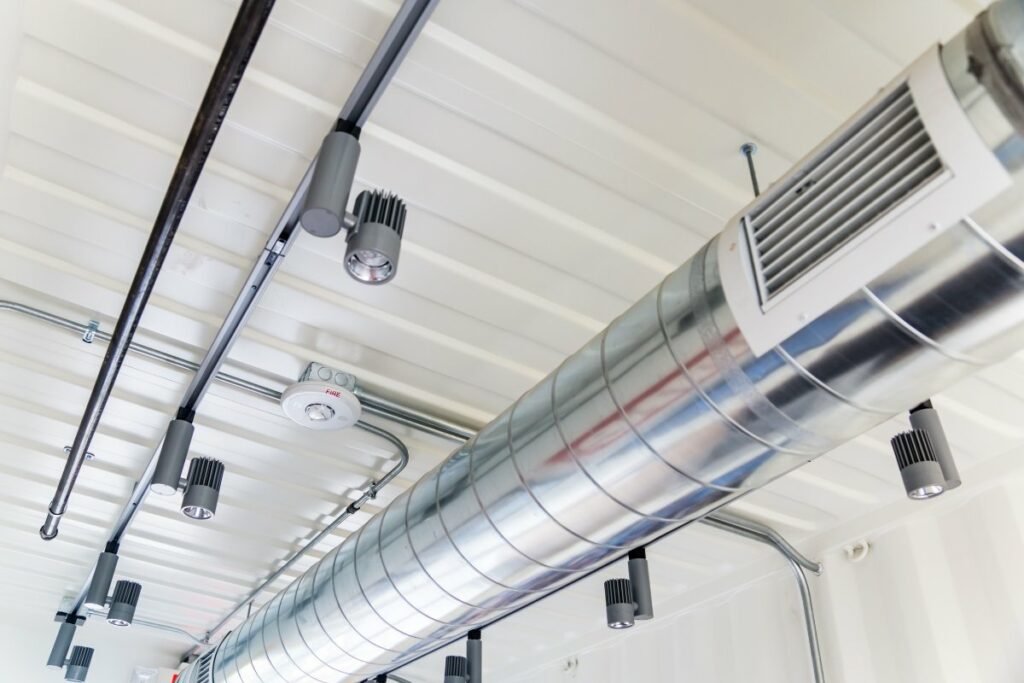
The type of ductwork you choose can have an effect on the efficiency of your heating and cooling system and, consequently, your energy bills.
The most commonly used type of ductwork is metal ductwork. Metal ductwork is durable and easy to install, but it can be expensive and difficult to maintain. It also has poor insulation, which means it can lose heat or cool air quickly. This can lead to higher energy bills.
Fiberglass ductwork is another popular option. It’s a lot lighter than metal ductwork and less expensive, but it can be difficult to install and has poor insulation. As a result, the same energy efficiency issues can occur.
Plastic ductwork is a great choice for those looking for an inexpensive and easy to install option. The downside is that plastic ductwork is not as durable as metal or fiberglass, so it will need to be replaced more often. Additionally, it has poor insulation, which can result in higher energy bills.
When considering different types of ductwork, it’s important to consider their energy efficiency. Metal, fiberglass, and plastic ductwork all have different levels of insulation, which can have an effect on your energy bills. If you’re looking for a more energy-efficient option, consider investing in insulated ductwork. This type of ductwork is more expensive, but it is better at preventing heat or cool air from escaping, resulting in lower energy bills.
Benefits of Installing Properly-Sized Ductwork
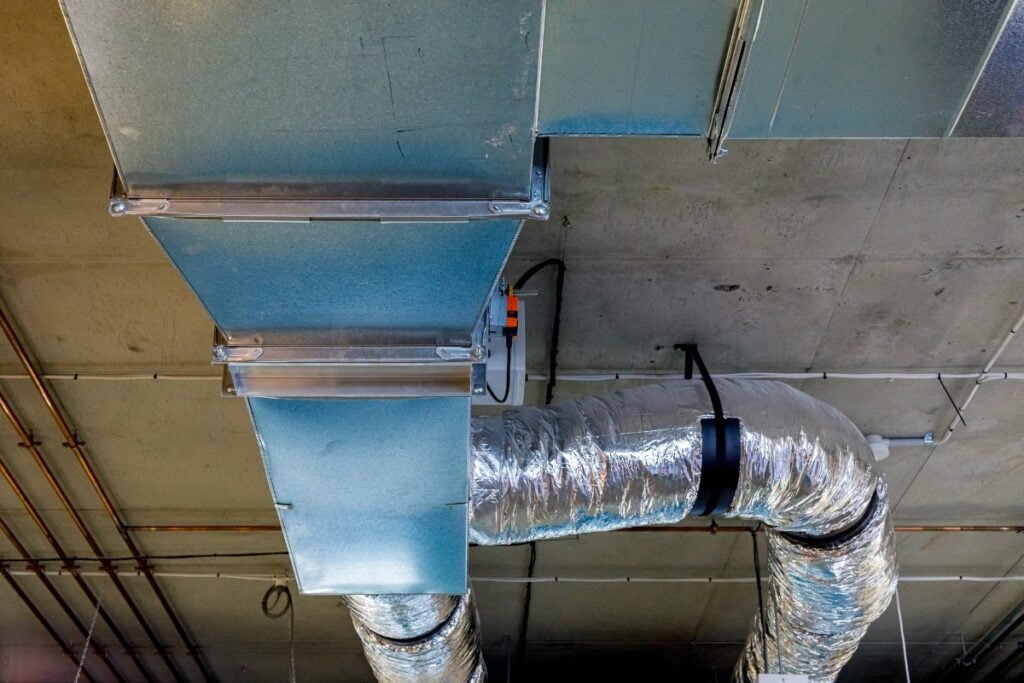
Installing the right size of ductwork is essential for any home to ensure optimal energy efficiency. With the right type of ductwork, homeowners can reduce their energy bills and enjoy many other benefits. Improperly-sized ductwork can lead to significant increase in energy bills and a disruption of airflow in the home.
First and foremost, installing the right type of ductwork allows for improved air quality in the home. The right type of ductwork can help move air efficiently throughout the home, reducing air stagnation and improving air circulation. This, in turn, enables the air conditioner and other heating and cooling systems to run more efficiently. As a result, home occupants can enjoy improved air quality, better comfort, and a healthier environment.
Another benefit of installing properly-sized ductwork is a reduction in energy bills. By using the right type of ductwork, homeowners can save up to 20-30% on their energy bills. This is because well-sized ductwork helps the HVAC system run more efficiently, thereby reducing energy consumption. Moreover, it also prevents the system from running too hard, which can lead to costly repairs and higher energy bills.
Moreover, installing the right type of ductwork helps reduce noise in the home. Homeowners can choose between different types of ductwork such as insulated, sound-attenuating, and flexible ducts. These can help reduce the amount of noise generated by the systems and provide a more comfortable environment for the occupants.
Finally, installing properly-sized ductwork helps increase the lifespan of your HVAC system. The right type of ductwork ensures that the system runs more efficiently and with greater efficiency, the system is less likely to suffer from premature wear and tear. As a result, homeowners can save money on expensive repairs and replacement costs in the long run.
In conclusion, installing properly-sized ductwork can help homeowners save money on energy bills, improve air quality in the home, reduce noise, and increase the lifespan of their HVAC system. By choosing the right type of ductwork for your home, you can enjoy all these benefits and more.
Installing the Right Type of Ductwork for Maximum Energy Efficiency

Installing the right type of ductwork is an important step to maximize the energy efficiency of your HVAC system. Poorly installed ductwork can lead to a significant increase in energy bills and home comfort issues. The type of ductwork you choose will depend on the size and layout of the space, but there are a few key considerations that you should keep in mind when selecting the right type of ductwork for your home.
Before we get into the specifics of selecting the right type of ductwork, it’s important to understand the basic types of ductwork and how they can affect energy efficiency. Flexible ductwork is the most common type of ductwork and is typically found in residential HVAC systems. It’s made from a flexible plastic or metal material, which makes it lightweight and easy to install in tight spaces.
However, flexible ductwork is prone to holes and cracks, which can reduce energy efficiency. Rigid ductwork is less common, but it’s a great option for larger, more complex spaces. It’s made from metal, which makes it more durable and resistant to wear and tear.
When selecting the right type of ductwork for your home, it’s important to consider the size of the HVAC system. Flexible ductwork is typically used in smaller HVAC systems, as it’s lightweight and can be installed in tight spaces. It’s important to check for holes and cracks in the ductwork, as these can reduce energy efficiency. Rigid ductwork is typically used in larger systems, as it’s more durable and resistant to wear and tear. It’s also important to use the right type of insulation with the ductwork to ensure proper insulation and energy efficiency.
Another key consideration when selecting the right type of ductwork is the layout of the space. If the space is small, flexible ductwork may be the best option. However, if the space is larger, rigid ductwork may be necessary. It’s important to discuss your options with a professional HVAC contractor to ensure that you select the right type of ductwork for your home.
When it comes to energy efficiency, the right type of ductwork is essential. Poorly installed ductwork can lead to a significant increase in energy bills and home comfort issues. It’s important to choose the right type of ductwork for your HVAC system and
Measuring the Difference in Energy Efficiency with Ductwork
The final thing to consider is how to measure the difference in energy efficiency between different types of ductwork. The best way to do this is to use energy monitoring devices to measure energy consumption in your home. By monitoring energy consumption, you can gain insight into how the different types of ductwork affect energy efficiency. Additionally, you can use energy audits to identify any air leaks in your ductwork, which can then be addressed to improve energy efficiency.
When it comes to improving energy efficiency, the type of ductwork you use can make a big difference. By understanding the different types of ductwork and how they affect energy efficiency, you can make informed decisions about what type of ductwork to use in your home. Additionally, using energy monitoring devices and energy audits can help you measure the difference in energy efficiency
Conclusion
The type of ductwork used in a home plays a major role in energy bills and indoor comfort. Different types of ductwork can vary in their insulation, size, and sealing. Poorly insulated ducts can cause energy to escape from the ducts, causing energy bills to increase. Larger ducts can cause too much air to flow, resulting in stress on the HVAC system and resulting in higher energy bills. Poorly sealed ducts can cause air leaks, resulting in energy loss and higher energy bills.
Homeowners should consider the type of ductwork used in their homes and the impact it is having on their energy bills. The right type of ductwork can help save energy and money. Taking the time to research and select the right type of ductwork can have a positive impact on energy bills, indoor comfort, and overall energy efficiency.
If you need professional help with your ductwork, Cool Pro Heating and Cooling offers professional air duct services to help maintain the condition of your ductwork and the quality of the air that you’re breathing. Call us at 770-694-6232 or request a free estimate on our website form today.

